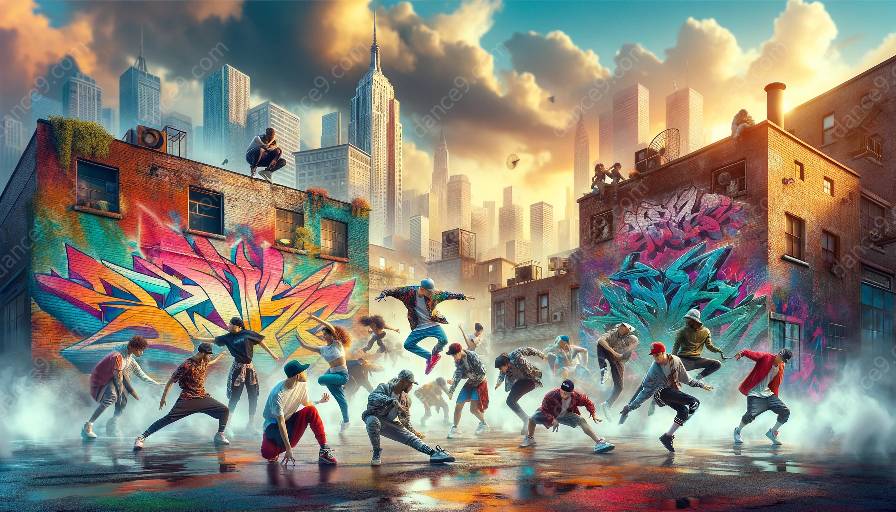Street dance, with its roots in urban culture and contemporary music, has evolved to encompass various styles and techniques. While street dance is often associated with impressive athleticism and intricate movements, choreographers are finding innovative ways to incorporate storytelling into their routines, adding depth and emotion to their performances. In this exploration, we will delve into the techniques and approaches that choreographers can use to infuse storytelling into street dance choreography, creating a compelling and immersive experience for both dancers and audiences.
Understanding Street Dance Choreography
Street dance choreography encompasses a wide range of styles, including hip-hop, breaking, popping, locking, and house dance, among others. It is characterized by its improvisational and freestyle nature, with movements often influenced by the surrounding environment, music, and personal expression. Choreographers in street dance have the freedom to blend various techniques and movements, allowing for a diverse and dynamic choreographic language.
The Role of Storytelling in Street Dance
Storytelling in street dance involves conveying narratives, emotions, and themes through movement. By integrating storytelling into their choreography, dancers and choreographers can connect with audiences on a deeper level, eliciting powerful emotional responses and creating a memorable experience. It allows for the exploration of character development, thematic elements, and personal expression, elevating street dance performances beyond mere physical displays of skill.
Infusing Emotion and Expression
One of the key elements of incorporating storytelling into street dance routines is the ability to convey genuine emotion and expression through movement. Choreographers can achieve this by encouraging dancers to embody the characters or emotions central to the narrative being portrayed. This may involve exploring a range of emotions, from joy and excitement to pain and struggle, allowing for a nuanced and evocative performance.
Character Development and Identity
Developing characters within street dance routines adds depth and complexity to the performance. Choreographers can work with dancers to establish distinct characters, each with their own motivations, personalities, and arcs. Through movement, gestures, and interactions, dancers can breathe life into these characters, inviting audiences to immerse themselves in the narrative unfolding before them.
Integrating Thematic Elements
Thematic elements play a crucial role in storytelling through street dance choreography. Choreographers can explore a myriad of themes, such as love, struggle, unity, rebellion, or empowerment, and translate them into movement sequences that resonate with audiences. By infusing thematic elements into the choreography, dancers can evoke powerful imagery and messages that transcend mere physicality, creating a cohesive and impactful performance.
Composing Movement Sequences
Choreographers must carefully structure movement sequences to effectively convey the narrative and themes embedded within the choreography. Each movement should serve a purpose, whether it is to advance the storyline, evoke a specific emotion, or communicate a thematic concept. By crafting cohesive and interconnected movement sequences, choreographers can ensure that the storytelling unfolds seamlessly and resonates with the audience.
Utilizing Music and Sound
Music and sound are integral components of street dance choreography, and they can significantly enhance the storytelling aspect of a routine. Choreographers can select music that complements the narrative and evokes the desired emotions. Additionally, incorporating sound effects or spoken word segments can further enrich the performance, adding layers of auditory engagement that reinforce the storytelling elements.
Collaboration and Communication
Effective storytelling in street dance choreography often involves a collaborative process between choreographers, dancers, and other creative contributors. Clear communication and synergy among team members are essential for realizing the choreographer's vision and ensuring that storytelling elements are effectively conveyed. Open dialogue and experimentation can lead to innovative approaches and enrich the overall creative process.
Seamless Integration of Technique and Narrative
While storytelling adds an emotional and thematic dimension to street dance choreography, it should seamlessly integrate with technical proficiency. Choreographers must balance the storytelling elements with the mastery of dance techniques, ensuring that the narrative does not overshadow the athleticism and precision of the movements. The harmonious fusion of technique and narrative can captivate audiences and elevate the overall impact of the performance.
Conclusion
Storytelling in street dance choreography opens up a world of creative possibilities, allowing choreographers to craft compelling narratives, evoke powerful emotions, and engage audiences on personal and universal levels. By infusing emotion, character development, thematic elements, and seamless movement sequences, choreographers can create immersive and unforgettable performances that transcend traditional perceptions of street dance. Through collaborative exploration and experimentation, the fusion of storytelling and choreography paves the way for transformative and resonant experiences in the world of dance.






































